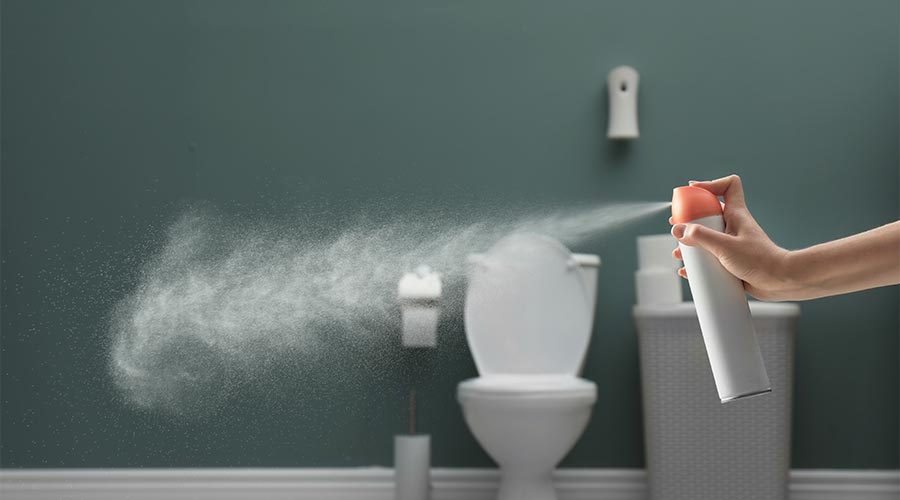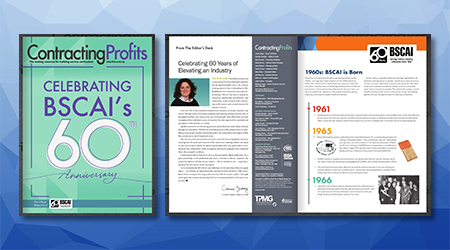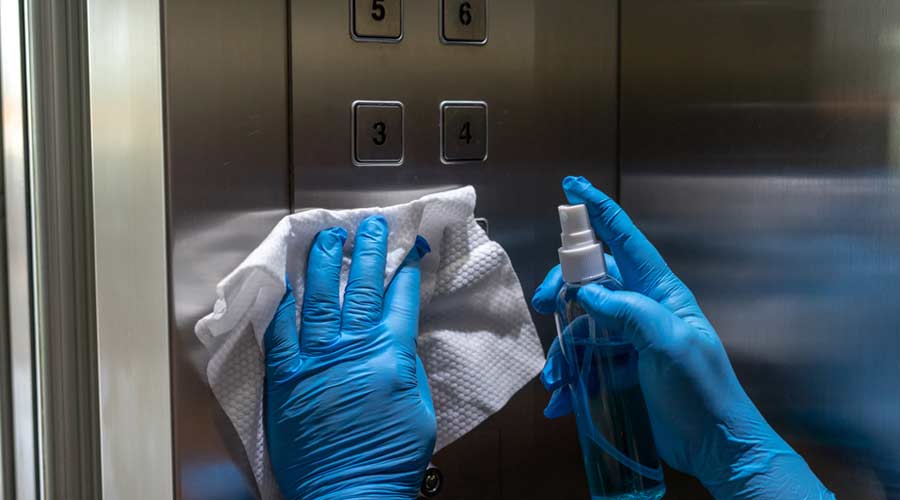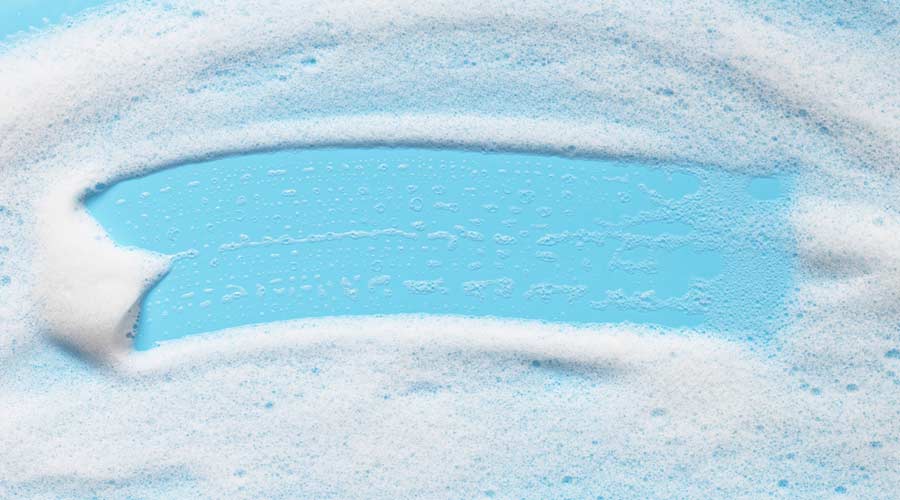
It's the first impression most people never forget. They step into a restroom, the floor gleams, the counters shine, and the trash cans are empty. But one sniff tells them the truth: it doesn't smell clean.
"Customers say if it doesn't smell clean, it isn't clean," says Keith Schneringer, Senior Director of Marketing Jan/San and Sustainability at BradyPLUS, Las Vegas. "People won't think a space is clean if it still smells bad."
Odor control remains one of the most persistent challenges in commercial facilities. From hospitals and schools to airports or hotels, the stakes are high. Unpleasant smells can erode trust in any cleaning program and can even influence how people behave in that space.
The Science of Smells
Long before germ theory, people feared the stench of disease. In medieval Europe, it was a common belief that outbreaks, including the Great Plague of 1665, were caused by miasma — the idea that sickness spread through foul, invisible vapors. Plague doctors wore their infamous beak-shaped masks, stuffed with herbs and flowers, believing that the fragrance could protect them against contaminated air.
“Although the miasma theory proved incorrect, it encouraged cleanliness and paved the way for public health reform,” wrote John Walker and Jeffery Campbell, Ph. D. in Microbiology for Cleaning Workers – Simplified. “The pioneer nurse Florence Nightingale (1820-1910) firmly believed in miasmas and became celebrated for her work in making hospitals clean, fresh, and airy. The miasma theory also helped interest scientists in detecting matter and led eventually to the identification of microbes as agents of infectious disease.”
That history underscores a modern truth: odor is not cosmetic. In fact, it's often the first indicator of a problem that requires scientific, not superficial, solutions.
Schneringer defines two main categories of odors: residual odors, which cling to grout, drains, and porous surfaces, and transient odors, which arise from human activity, food, or the use of space.
"Roll up your sleeves and understand where the odors are coming from," he says.
Where Odors Show Up
When addressing odors, the most obvious culprit is often the restroom, the No. 1 source of complaints in most facilities. But odors crop up in less expected places, too.
According to Schneringer, hotels battle smoke and cannabis smells in guest rooms. Airports and subway stations absorb the collective impact of thousands of travelers who carry food, leave spills, use restrooms, or pass through. Medical settings such as cancer wards and senior living facilities face persistent biological odors that can unsettle patients and families. Even outdoor areas aren't immune. Schneringer recalls a customer dealing with bird guano on building ledges, resulting in persistent, offensive smells in dining areas below.
People's judgments about cleanliness often come down to their sense of smell. Some prefer a completely scent-free environment. Others expect a fragrance.
"I was in a conversation recently where the customer's goal was the absence of odor. That's when they knew it was clean — where it's just neutral,” says Schneringer. "There are still some people who walk into spaces, though, and they want to smell a pleasant fragrance so that they know that it was cleaned."
The challenge is balancing fragrance expectations with health. Strong perfumes can be respiratory irritants. That's why more facilities are moving toward low-VOC (volatile organic compounds), subtle "clean scents" rather than heavy masking.
The Psychology of Scent
Clean fragrances can also influence occupant behavior. Dr. Katie Liljenquist, a Behavioral Scientist and Adjunct Professor at The University of Utah's David Eccles School of Business, has studied how scent shapes human behavior. In a peer-reviewed study titled “The Smell of Virtue: Clean Scents Promote Reciprocity and Charity,” published in Psychology Today in 2010, Dr. Liljenquist observed that participants in a room with a citrus scent were more likely to act fairly, cooperate, and make ethical choices versus their counterparts in a control group exposed to neutral or no smell. Subjects exposed to scent were more generous in trust-based economic games and more likely to express interest in volunteering. The study concluded that subtle environmental cues, such as cleanliness-related scents, can unconsciously activate moral concepts, prompting people to make prosocial and ethical decisions.
"Subtle, clean scents can actually nudge people toward better behavior," Liljenquist explains. “The implication, odor control isn't just about perception of cleanliness, it influences how people treat one another in the space. [Scent] absolutely affects how people behave because it activates these norms of professionalism, kindness, and honesty.”
Scents activate the part of the human brain that controls memory and emotion, known as the limbic system. They can bypass higher-consciousness reasoning and provoke an emotional response. Liljenquist notes that Disney parks are a perfect example of this.
"Clean, pleasant smells in the rides, and the lines leading up to them, reduce frustration — they make people happy they're waiting around," she says. "Scents are just a critical part of Disney's emotional architecture."
This is also known as “scent hacking,” which is a growing concept in environmental design. For example, Liljenquist says citrus has been shown to alleviate typing errors, and peppermint helps with alertness and task focus.
For facility cleaning managers, this adds a surprising dimension. Neutralizing odors can prevent complaints. However, introducing a subtle, clean scent may improve how occupants behave, work, and interact.
It has become an emerging trend for facility owners to pump scents to get the results they desire. Schneringer says these leaders do this because it allows them to brand their facility a certain way. A good scent can be pleasing in the moment, but also a positive experience visitors will later associate with a facility. In addition to branded scents, other smell trends Schneringer is seeing include:
• Sustainability. More products come with environmental certifications, lower impact chemistries, and packaging that reduces waste.
• Indoor air quality. Natural disasters such as a pandemic or wildfires have prompted facility managers to view odor control as essential to occupant health, not just comfort.
• Fragrance sensitivity. Low-VOC formulations with fewer irritants that avoid perfume-like masking, that instead boast fresh or neutral scents.
Training Matters
Odor control products work only if frontline staff understand the why behind their application. Without context, cleaning professionals may rigidly follow procedures — even when conditions change. When end users understand the reason behind a process, they can adapt and often identify opportunities to mitigate persistent odors.
"I see that frequently as a way we can discover process improvement," Schneringer says.
Walker and Campbell stress the same principle — especially when it comes to stubborn restroom odors.
"Most odor problems in facilities can be controlled simply by proper cleaning and disinfecting procedures," they wrote. "Invariably, many odors are caused by improper cleaning procedures and tools.”
The way to remove odors is to educate end users to do the following:
• Use clean buckets, sprayers, and mops
• Use clean solutions only
• Use exact measures of disinfectants
• Log solution changes daily
• Train cleaning workers properly
• Assign adequate cleaning time
• Adjust cleaning frequencies to reflect traffic and soil loads
• Use two-sided or double buckets
• Employ friction in cleaning
• Use microfiber mops
When odor evades even the most effective cleaning procedures and tools, then it's time for distributors to step in and look for sources beyond the mop and cloth.
"One of the most common culprits is the floor drain," Schneringer says. “If the water barrier dries or air pressure shifts, sewer gases can seep into a space. The restroom can look perfectly clean, but smell like a sewer."
Other times, HVAC systems contribute to foul smells. Negative or positive air pressure changes can draw odors up from plumbing or ducts. Even spotless surfaces can't overcome a poorly balanced ventilation system.
"Don't ignore the floor drain," Schneringer advises. "It's a more common culprit than people think."
What Works
Schneringer suggests there are a few go-to technologies salespeople can offer as solutions if cleaning isn’t getting the job done. Those include:
• Bioactive chemistry. Products that deploy "good" bacteria to outcompete odor-causing microbes. They break down fats, oils, and greases that would otherwise fuel malodors — kitchens, dumpsters, and restrooms benefit most.
• Air purifiers. Following the pandemic and amid wildfire smoke, demand for portable air purifiers with carbon filters has surged. These units supplement HVAC systems, providing additional air exchanges and filtering odors, as well as particulates.
• Air neutralizers. Dry vapor systems release a fine mist that bonds with odor molecules, pulling them from the air.
• Trap seals. Silicone inserts for floor drains allow water to pass through, but block gases and pests from entering.
Neutralizing odor in a hotel room, lobby, or public restroom demonstrates to facility managers what control looks like. Schneringer recalls a recent demonstration at Grand Central Station where heavy foot traffic and unsanitary activity created a mix of lingering odors — everything from urine and vomit to body odor. His team demonstrated a dry vapor neutralizer against the smells. After a few passes, facility managers were amazed at how quickly the overall odor level decreased in the historic, high-profile space.
Schneringer says the best way to sell solutions is to train reps to dig deeper — looking at transient and residual odors, floor drains, and other hidden sources — so they understand what's really driving the problem.
"We train sales reps to ask questions and to understand what's going on in the space," he says. "Sometimes it's a matter of doing a treatment, and sometimes we need to clean up...so we [create] a clean environment first and then work on whatever odors may or may not be there."
Ben Walker is President of Walker Foundry, a cleaning industry consultancy. A 20-year industry veteran, he writes regularly on the human element of cleaning, elevating custodial operations, and workforce innovation.

 Celebrating BSCAI's 60th Anniversary eBook
Celebrating BSCAI's 60th Anniversary eBook The Down and Dirty on Cleaning in Virus Season
The Down and Dirty on Cleaning in Virus Season How Surfactant Use is Expanding in Commercial Cleaning
How Surfactant Use is Expanding in Commercial Cleaning